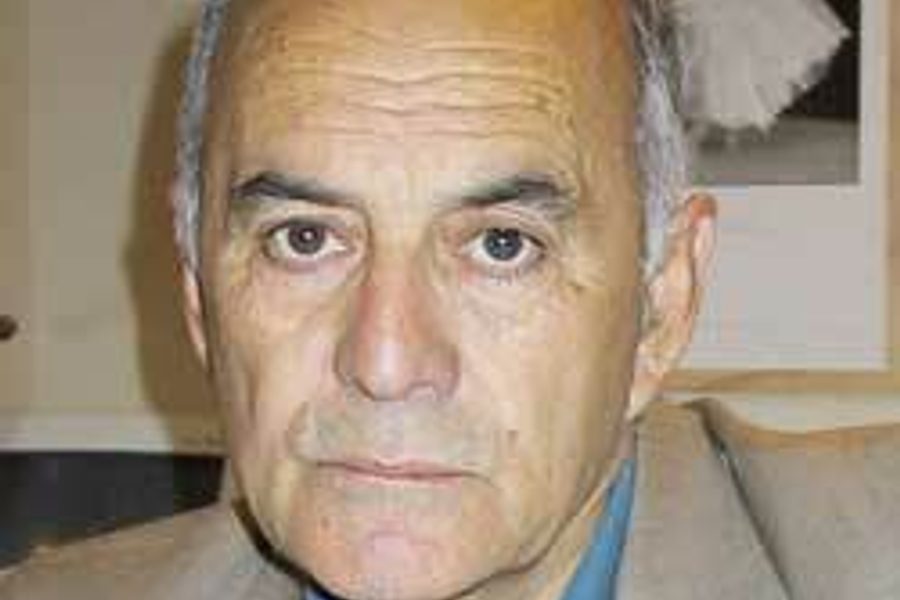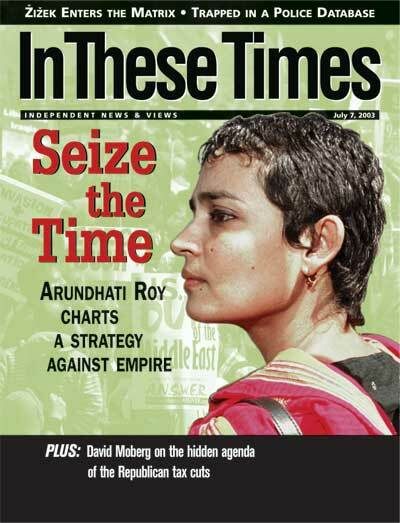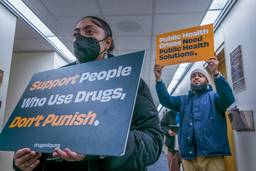
Dr. Helen Caldicott, one of the foremost peace activists of our time, is co-founder of Physicians for Social Responsibility and Women’s Action for Nuclear Disarmament (WAND, now Women’s Action for New Directions). She is also the author of five books, most recently The New Nuclear Danger: George W. Bush’s Military-Industrial Complex. Caldicott spoke with In These Times from Salt Lake City.
You have characterized the first Gulf War as the United States’ second nuclear war because of the use of depleted uranium (DU) weapons. What’s your take on military action in Iraq?
It’s the third [nuclear war]. Well, actually it’s not, because they used uranium weapons in Kosovo and in Afghanistan, so actually it’s the fifth.
Some consider DU weapons to be in violation of the Geneva Convention because they are “indiscriminate weapons”—that is, they do not distinguish between civilians and combatants.
They also leave a radioactive battlefield for the rest of time. This is a gross violation of the Geneva Convention, but more than that, from a medical perspective—I’m a pediatrician—it is just almost unbelievable that they would use these weapons in an indiscriminate way.
My friend, the late Adm. Gene Carroll, of the Center for Defense Information, said, “Helen, our mission in the Pentagon is to destroy property and to kill people.” Clearly it is, and that takes my breath away. I mean, haven’t we evolved beyond the primitive notion of killing? If we haven’t moved away from the primitive notion of killing—and we clearly haven’t—we’ll destroy life on Earth. We’re heading rapidly in that direction.
You saw some major victories in the ’80s and at the end of the Cold War. What happened to the “peace dividend”?
If you read my new book, the whole story’s in there. Nothing’s changed since the ’80s. Well, two things have changed. One, nobody knows the weapons are there, whereas in the ’80s at least we were all worried and scared about it. And two, we’ve got nuclear cowboys in the White House who say that they will use nuclear weapons on any country they so desire [regardless of whether the country has nuclear capability or not]. Now that’s a totally new concept in the history of the United States.
What’s the status of the Nuclear Policy Research Institute, which is a group you’ve set up to provide education about nuclear weapons and power programs?
We’re just setting ourselves up now. The pain in the neck is you have to raise money. The federal government should be funding me because I’m trying to save life on the planet—I’m a conservative. Anyone who has notions to use nuclear weapons is a radical!
We’ve opened an office in D.C. located among all the right-wing think tanks that I want to take on. We’re in the process of hiring a communications director so that we can get ourselves and all the wonderful scientists around the country on television to negate what Rumsfeld, et al. say.
Fundraising for progressive organizations is always difficult, but it is especially tough in the current economic climate.
Yeah. But I’m getting the money. There are a lot of wealthy people in this country who care deeply about the status quo at the moment. I will get the money for sure. Rosie O’Donnell just gave me $100,000.
What about some of the more insidious ways that nuclear terror has entered our lives, such as leaky power plants?
The power plants routinely vent gasses every second of every day and routinely pollute the cooling water, and then you get bioconcentration of the radioisotopes in the food chain. And nuclear power plants are targets for terrorists. They don’t need nuclear weapons; they’re deployed all over the country in the form of 103 reactors. So the American people are in grave danger.
My goal with the Institute is to end the nuclear age in five years—to close down all reactors in five years and to abolish nuclear weapons between Russia and America, and then all the other nuclear nations will step into line and do the same thing. Russia’s ready. It’s America that’s holding up that process. We nearly got there at the end of the ’80s, so I plan to finish the work. It’s a work in process.
Do scientists have to check their humanity at the door when they enter a laboratory to work on nuclear weapons or cluster bombs?
All the people who build these cluster bombs or uranium bombs check their humanity at the door. They’ve sold their souls like Faust.
How do we change their minds?
I once spoke at Sandia Labs, a major defense contractor, and there were thousands of scientists there. I told them they should leave their jobs, that they shouldn’t be doing this work that could destroy life on our planet. They lined up in queues afterward to ask me questions, and they said, looking behind them, “That was terrific—those people here needed to hear that.’ ”
You’ve sacrificed a lot for your work.
I have, really. I’ve sacrificed my life. Because my vocation is medicine, it’s like being a nun. And I’ve had to give that up. I really resent it because I think I only get one go at this life, and if we had eliminated nuclear weapons at least I would feel like my life’s been worthwhile. At the moment I don’t [feel that way], and that’s why I’m really determined to finish the work before I die.
You have characterized the first Gulf War as the United States’ second nuclear war because of the use of depleted uranium (DU) weapons. What’s your take on military action in Iraq?
It’s the third [nuclear war]. Well, actually it’s not, because they used uranium weapons in Kosovo and in Afghanistan, so actually it’s the fifth.
Some consider DU weapons to be in violation of the Geneva Convention because they are “indiscriminate weapons”—that is, they do not distinguish between civilians and combatants.
They also leave a radioactive battlefield for the rest of time. This is a gross violation of the Geneva Convention, but more than that, from a medical perspective—I’m a pediatrician—it is just almost unbelievable that they would use these weapons in an indiscriminate way.
My friend, the late Adm. Gene Carroll, of the Center for Defense Information, said, “Helen, our mission in the Pentagon is to destroy property and to kill people.” Clearly it is, and that takes my breath away. I mean, haven’t we evolved beyond the primitive notion of killing? If we haven’t moved away from the primitive notion of killing—and we clearly haven’t—we’ll destroy life on Earth. We’re heading rapidly in that direction.
You saw some major victories in the ’80s and at the end of the Cold War. What happened to the “peace dividend”?
If you read my new book, the whole story’s in there. Nothing’s changed since the ’80s. Well, two things have changed. One, nobody knows the weapons are there, whereas in the ’80s at least we were all worried and scared about it. And two, we’ve got nuclear cowboys in the White House who say that they will use nuclear weapons on any country they so desire [regardless of whether the country has nuclear capability or not]. Now that’s a totally new concept in the history of the United States.
What’s the status of the Nuclear Policy Research Institute, which is a group you’ve set up to provide education about nuclear weapons and power programs?
We’re just setting ourselves up now. The pain in the neck is you have to raise money. The federal government should be funding me because I’m trying to save life on the planet—I’m a conservative. Anyone who has notions to use nuclear weapons is a radical!
We’ve opened an office in D.C. located among all the right-wing think tanks that I want to take on. We’re in the process of hiring a communications director so that we can get ourselves and all the wonderful scientists around the country on television to negate what Rumsfeld, et al. say.
Fundraising for progressive organizations is always difficult, but it is especially tough in the current economic climate.
Yeah. But I’m getting the money. There are a lot of wealthy people in this country who care deeply about the status quo at the moment. I will get the money for sure. Rosie O’Donnell just gave me $100,000.
What about some of the more insidious ways that nuclear terror has entered our lives, such as leaky power plants?
The power plants routinely vent gasses every second of every day and routinely pollute the cooling water, and then you get bioconcentration of the radioisotopes in the food chain. And nuclear power plants are targets for terrorists. They don’t need nuclear weapons; they’re deployed all over the country in the form of 103 reactors. So the American people are in grave danger.
My goal with the Institute is to end the nuclear age in five years—to close down all reactors in five years and to abolish nuclear weapons between Russia and America, and then all the other nuclear nations will step into line and do the same thing. Russia’s ready. It’s America that’s holding up that process. We nearly got there at the end of the ’80s, so I plan to finish the work. It’s a work in process.
Do scientists have to check their humanity at the door when they enter a laboratory to work on nuclear weapons or cluster bombs?
All the people who build these cluster bombs or uranium bombs check their humanity at the door. They’ve sold their souls like Faust.
How do we change their minds?
I once spoke at Sandia Labs, a major defense contractor, and there were thousands of scientists there. I told them they should leave their jobs, that they shouldn’t be doing this work that could destroy life on our planet. They lined up in queues afterward to ask me questions, and they said, looking behind them, “That was terrific—those people here needed to hear that.’ ”
You’ve sacrificed a lot for your work.
I have, really. I’ve sacrificed my life. Because my vocation is medicine, it’s like being a nun. And I’ve had to give that up. I really resent it because I think I only get one go at this life, and if we had eliminated nuclear weapons at least I would feel like my life’s been worthwhile. At the moment I don’t [feel that way], and that’s why I’m really determined to finish the work before I die.





